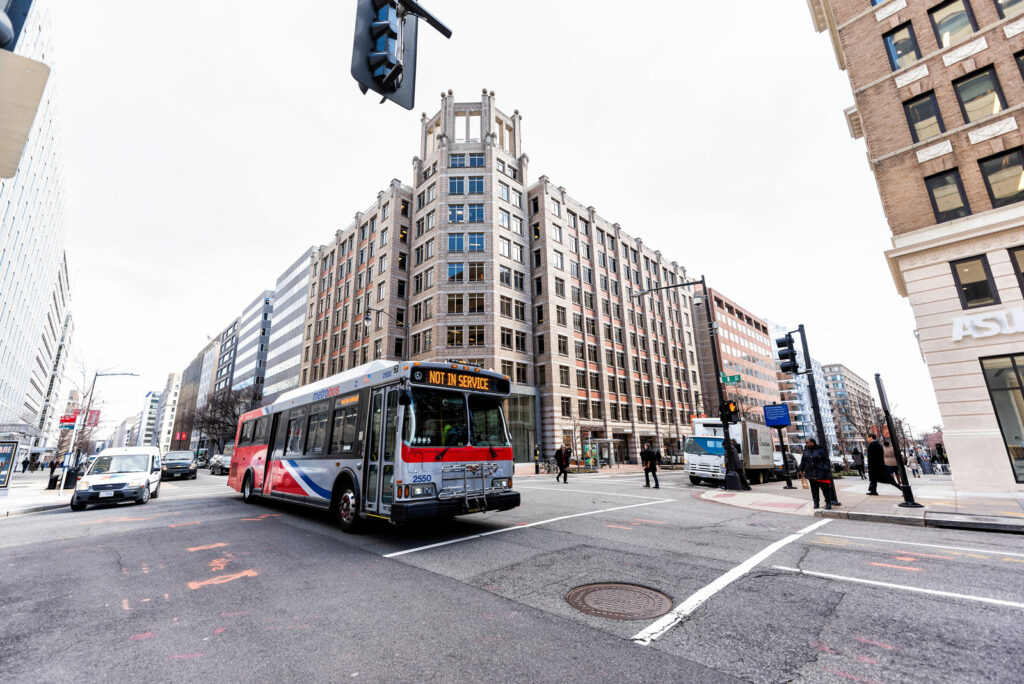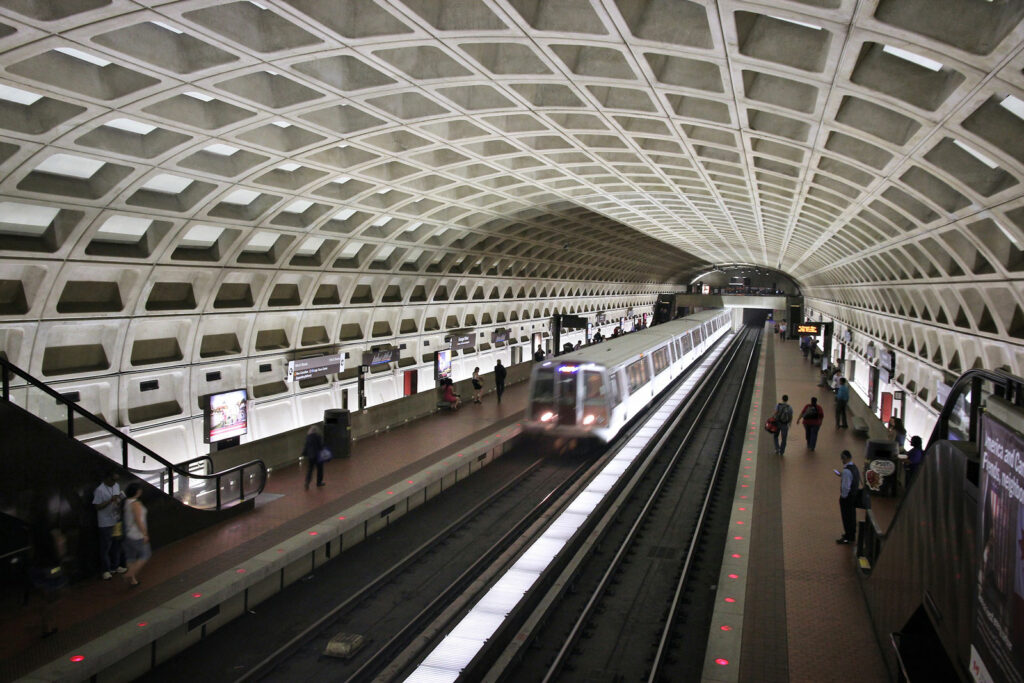
Washington, D.C.’s Transportation Benefits Equity Amendment Act of 2020, also known as the “parking cash-out” law, impacts almost every major employer in D.C.: those who have both 20 or more employees, and where the employer provides employee parking spaces that the employer does not own. The goal of the bill is to reduce the amount of single-occupancy vehicles used for commuting by mandating employers incentivize sustainable transportation at par with employer parking incentives.
Put simply, you provide a parking benefit for employees, you now need to provide them the same market value in a clean-air transportation fringe benefit.
Administratively, this may not be a difficult task, especially if your payroll system is already set up to allow employees to pay for transit commute expenses with pre-tax wages (similar to employee contributions to health care programs).
However, the law should not be viewed solely as a regulatory and financial issue. From the perspective of retaining and recruiting talent, the options you choose in complying with this law could have serious ramifications.
There are three main ways to comply with the law, and a fourth choice to get out of the law altogether! Adapted from § 32–152.01. “Parking benefit equivalent”:
If an employer offers a parking benefit to an employee, the employer shall:
- Offer the employee a Clean-air Transportation Fringe Benefit in an amount equal to or greater than the monthly market value of the parking benefit offered to the employee
- Pay to the Department a Clean Air Compliance fee of $100 per month for each employee who is offered a parking benefit
- Implement a transportation demand management plan
Option 1: Offer the Clean-air Transportation Fringe Benefit

This was what the law was designed to do, and is a recommended option. As you are likely already navigating compliance with D.C.’s Commuter Benefits Law, employers could add the benefit amount to a pre-existing employee-paid pre-tax benefit account, or to the employer-paid direct benefit account for transportation.
Take note that the law puts the role of estimating the amount of the benefit on the employee: “an employee who accepts a Clean-air Transportation Fringe Benefit shall, in a form determined by the Department, estimate the amount of the Clean-air Transportation Fringe Benefit that the employee will use each month.”
If that estimate is less than what is offered to the employee for a parking benefit, the employer will need to provide compensation on top of the benefit, an increase of a contribution to the employee’s health coverage, or both, so the total amount is at parity with the market value of the offered parking benefit.
It’s recommended to have standardization or a common method for determining the potential costs of a commute across employees, and that employees are engaged directly regarding their variety of commute options.
Option 2: Pay Fees of $1,200 Each Year for Each Eligible Employee
If “free parking” is baked into your agreements with employees, or if you’re tied in long-term contracts for parking spaces that wouldn’t make sense to change when the lease is renewed, and also choose to not offer the value of the parking benefit to employees as a Clean-air Transportation Fringe Benefit, paying a $100/employee/month fee is technically an option.
You may be able to mitigate some of the financial impact by offering fewer groups of employees a parking benefit. However, removing a parking benefit without providing a transit benefit (and appropriate commute planning resources) could result in serious employee pushback and potential turnover.
On the flipside, the prospect of removing a parking benefit may actually be easy for some employees who have transitioned to full-remote schedules. For those who may need to come to the workplace periodically or will have a hybrid work schedule in the future, it’ll be imperative to work with those employees on their transportation choices if they no longer will have a parking spot to drive to (and you’re not helping them financially with that change to a sustainable mode).
Bottom line: paying what is effectively a fine instead of providing that money as a benefit to the employee is likely not a viable solution for most companies long-term.
Option 3: Implement a Transportation Demand Management (TDM) Plan

Per the law, an appropriate TDM plan may satisfy the requirements of the law as long as it “would reduce by at least 10% from the previous year the number of commuter trips employees of the covered employer made by car, including for-hire vehicles, until 25% or less of employees’ commuter trips are made by car, including for-hire vehicles.” The District Department of Transportation (DDOT) has to approve the plan.
For this option, we strongly recommend working with an internal or external Transportation Demand Management professional, or utilizing the free local transit and consulting resources from goDCgo to determine if a TDM plan is the best course of action to comply with the law.
Helping 10% of your workforce transition to sustainable transportation each year, for many companies, may seem lofty. However, it is certainly achievable with the right commute planning resources.
The Bonus Option: Just Stop Paying For Employee Parking
While not spelled out literally, the intent of the law also supports just getting rid of employee parking altogether. If you can do it, this is the most cost-effective option as well as the best choice for the environment. It may also be aligned with your company’s values and goals, may help with LEED certification points, and advances other sustainability metrics. Making this new law simply not apply to you is a fantastic path forward!
A lot of companies have already transitioned from providing employee parking, and depending on your industry and how you and your employees are handling working through the pandemic, it might be more attractive than ever to go this route.
77% of companies are setting up hybrid work models, and it’s estimated that 40% of the workforce will have some type of hybrid work environment. The situation is ripe to engage with employees who were historically car commuters on their transportation choices. In many cases where people might only go to the office a couple times a week, a personalized commute plan that uses transit may even be more attractive than the prospect of driving in the first place.
Many remote workers since the onset of the pandemic have realized first-hand the cost disadvantages of car commuting, so removing a parking subsidy for everyone may be more palatable, especially when paired with higher employee engagement on making the (now fewer) commutes become sustainable commutes.
Getting to Compliance Means Partnering with Employees
With all four options, achieving compliance may require some major changes with some employees. For those who are already comfortable using transit, biking, or walking to work, this “parking cash-out” law is already a win-win for them, and it reinforces having sustainable commutes. For those who are used to driving for their commute and using an employee-provided parking spot, a high level of dialog with the employee is required. You will need to be a partner with your employees’ commutes, which may be a new concept for some employers.
Pre-pandemic, commutes were largely not the employer’s concern. Today, not partnering with employees on commute changes has consequences. 84% say “not commuting” is the top benefit of working from home, and four times more employees cited commuting as a reason for quitting a job compared to a decade ago. There is an opportunity here, as many people are not fully aware of their commute choices and the costs associated with them. A better, cleaner, and happier commute might be available for an employee, and studies support that people make better choices when those choices are clearer. A Harvard Business School study, for example, showed one out of ten changed their commutes after receiving personalised commute plans.
When all is said and done, this “parking cash-out” law is not designed to be a long-term thorn for employers, but a policy nudge towards employee engagement on helping encourage more sustainable commutes. If enough people switch to transit or other modes from driving as a single-occupant, vehicle gridlock could be lessened, and it would collectively make Washington, D.C. an even more attractive place to work.
Additional Resources
- goDCgo – Wasghington, D.C.’s Transportation Demand Management Program
- Transportation Benefits Equity Amendment Act of 2020
- Code of the D.C. Title 32, Chapter 1B, Reducing Single Occupancy Vehicle Use by Encouraging Transit Benefits
- Actionfigure Insights (formerly CommuteWise)
- Actionfigure Workplace & HR
Actionfigure Insights is Actionfigure’s transportation education, planning, and commute management solution with the most advanced, personalized, door-to-door commute planning available. Powered by Actionfigure’s advanced AI recommendation engine, private and public transportation information, and enhanced commuter benefits education tools, there’s no better solution.




